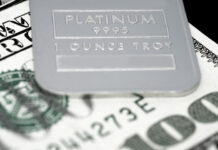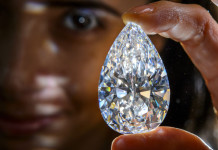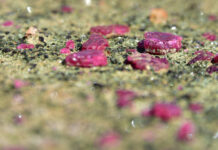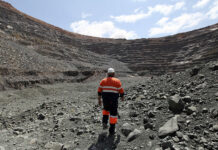
IN early 2022 Petra Diamonds CEO Richard Duffy declared the time had come for diamonds. After years of waiting, a “long-predicted” supply squeeze in all gem categories had arrived. More than that, the supply deficit was structural.
Two years later, diamonds are back in the mire.
Fingers (unadorned) point to the growth of lab-grown diamonds. But this is not the major factor it’s supposed to be, at least not for the current diamond price slump. In fact, lab-grown diamonds are under more pressure than their natural counterparts in the current market downturn. Manufacturers have consequently shifted sales to the industrial sector as prices fall faster in their grades than in natural diamonds, by 80%-90% in some cases.
Paul Zimnisky, a US diamond analyst, estimates that by next year, $6,000 spent on a one-carat natural diamond will get you six carats of lab-grown goods — the point being that lab-grown diamonds haven’t “replaced” natural diamonds, as their increasing premium demonstrates. Mined diamonds are consequently re-establishing their grip over the valuable bridal market.
Instead, the threat to the natural diamond market comes from shrinking Chinese sales, a development that can be traced to the start of the country’s trade war with the US in 2018, followed by Covid in 2020 that led to marriages plummeting 10.5%, according to data from De Beers. Before that, Chinese demand in diamonds had diamantaires rubbing their hands, growing from 1.5% of the market in 2000 to 15% by 2015.
But by 2023, Duffy’s hope of a structurally under-supplied diamond market was over. The industry’s midstream — cutters and polishers — was heavily overstocked, a state of affairs it is still struggling to overcome. Lately, amid a slump in economic growth and geopolitical distress, China has turned to gold and its safe-haven status rather than return to diamonds.
Diamond miners have been sent reeling. Shares in Mountain Province Diamonds, a North American firm, are 71% lower over 12 months. Shares in Botswana’s Lucara Diamonds and Gem Diamonds, a Lesotho miner, are 21% and 29% lower respectively. After a promising pulse in first-quarter sales, De Beers announced a cut to production after it revised guidance in April as fifth cycles sales fell 18% month-on-month.
Worse, global polished inventories have started rising again from 1.5 million carats in May to almost 1.7 million carats in July, according to industry publication Rapaport. The polished end of the diamond market was in “a downward spiral” with prices in all sizes continuing to fall this month, Morgan Stanley said in a report. “Manufacturers are struggling to reduce stocks as American retailers are buying on a hand-to-mouth basis, and Chinese retailers are not buying at all,” the bank said.
Memory & desire
For Petra Diamonds, South Africa’s largest rough diamond miner by some margin, the market deterioration has revived unpleasant memories. It nearly went bust when, in 2020, after spending eight years chasing 5-million carats a year in production, the market had another of its customary wobbles. It meant the firm was unable to support $650m in loan notes.
Duffy, the former CFO of AngloGold Ashanti, was appointed to lead Petra out of the morass. After failing to attract a takeover offer Duffy finally brokered an agreement with bond holders who accepted 91% of the firm’s share capital in new stock, and had a board appointed to keep oversight of the company’s recovery — bitter medicine for desperate times.
The company isn’t in that kind of trouble today, but the poor diamond market and some disappointing production performances saw Petra turn cash negative for its 2024 financial year (ended June). To his credit, Duffy was quicker to the punch this time around, first freezing $65m in capital projects and then imposing a $30m a year cost-cutting programme.
With the 2025 financial year on his doorstep, he then held a public meeting with investors in June in which a “smoothed out” capital programme totalling $100m in five-year mine extensions was unveiled. The aim is for resilience through the cycles as price and capital peaks rarely coincide, says Duffy. The firm would generate $180m in cash flow over the next five years even at conservative diamond prices (and $250m in free cash at a higher, midrange average price), he said.
Looming large in the plan’s thinking is $273m in loan notes that are due to mature in March 2026. “Part of the investor day was to provide visibility of what the business can generate in cash,” Duffy tells the FM. “We believe that should give assurance to the credit and the equity markets that we’re in a position to refinance the loan notes.”
Duffy acknowledges his optimism about the diamond market was “masked” by the deeper effects of Covid. Diamond miners have difficulty finding price correlations with other asset classes other than historical price growth against global GDP, which is typically about 2%, he says. “As growth returns to the market the impact of conflict and war is a new factor, but I agree with De Beers, we are probably looking at a U-shaped recovery,” he says.
It’s in this market that Anglo American is attempting to sell or separately list its 85% stake in De Beers. Anglo says it remains steadfast in exiting diamonds “for value”, market conditions notwithstanding. Were it to do so, the diamond market would get a welcome boost, says Duffy.
One benefit would be more information on “what they sell and how”. The second is a boost in advertising and branding spend, which De Beers CEO Al Cook has said is needed. “That would be positive for players like us and the industry is crying out for more marketing support to differentiate natural diamonds from lab-grown diamonds,” says Duffy.
Resource rich
Raj Ray, an analyst for BMO Capital Markets, says: “We remain cautious on the diamond market, at least over the next 12-18 months.” The bank is keeping a target price of 50p a share on Petra, and a market perform rating. It also points to production delivery which has been variable in the recent past.
The company, which mines the historic Cullinan mine near Pretoria, and Finsch in the Northern Cape, twice adjusted guidance last year, ending with 2.73-million carats in output. Given that the five-year expansion sees production increasing to between 3.4-million and 3.7-million carats a year, it looks ambitious.
But Duffy is upbeat about the South African mines, which are geological marvels, especially Cullinan. Operating for more than a century, the mine is renowned as the world’s most reliable producer of high-quality blue gems and appears to have the resources to keep on going. Duffy says ruefully he wishes for more blue gems right now, but the mine “is iconic”, he adds.
Cullinan is scoped to operate to 2048 in Petra’s rollout mine plan via the so-called D-Cut project requiring a new production shaft taking operations down to 1,000m — still relatively shallow, at least “as a former gold miner,” says Duffy. Finsch is planned to 2040 while a third mine, Williamson in Tanzania, is another huge orebody, though it’s low-grade and troubled with operational mishap and community discontent.
Petra has the ore resources in a diamond mining industry struggling to discover tomorrow’s diamond rings. The question is whether it can exploit them without costing shareholders.
A version of this article first appeared in the Financial Mail.










